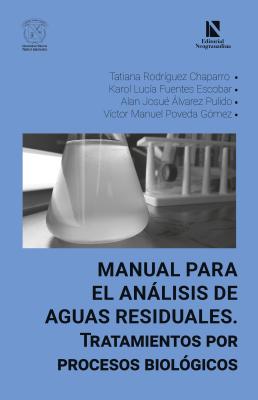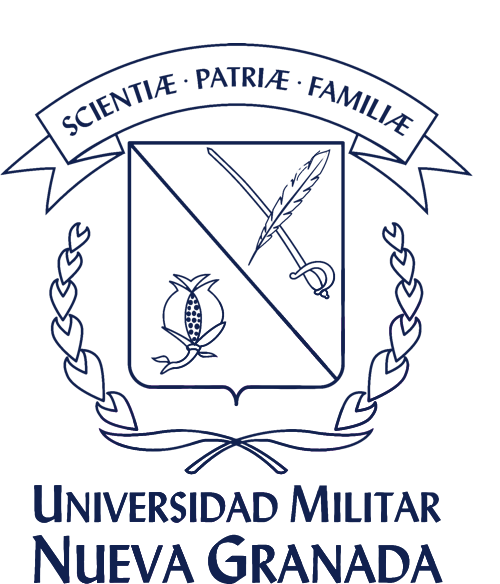Manual for the analysis of wastewater: Treatments through biological processes
Keywords:
wastewater, biogas, water quality, gas chromatography, biological processes, physicochemical, experimental methodsSynopsis
Sustainable Development Goals #3, Health and Well-being, and #6, Clean Water and Sanitation have shown the need for communities to manage and control drinking water and wastewater. These are some of the most important goals of governments because they allow for improving the quality of life of people, reducing the inequality gap, and promoting good practices in public health to reduce the presence of waterborne diseases. Even though knowledge of technologies for wastewater treatment has grown significantly, the progress in learning analytical techniques needs to be better understood to evaluate the proper functioning of the processes involved in a water treatment plant.
In this sense, this book is a support for teaching and research as it compiles and documents the work carried out for more than ten years in the Environmental Sanitation Laboratory of umng, regarding the study of analytical methods to monitor and evaluate the performance of different technologies based on biological processes for water treatment. This manual is aimed at undergraduate and graduate students, laboratory technicians, professors, and researchers who work in their routine with topics related to environmental sanitation, such as the monitoring of wastewater when biological processes treat it.
Chapters
-
Capítulo I. ¿Cómo se preparan las soluciones?
-
Capítulo II. Métodos clásicos para el monitoreo de aguas residuales
-
Capítulo III. Métodos especiales para el monitoreo de la digestión anaerobia
Downloads
References
APHA. (2012). Standard Methods for examination of water and wastewater,” 22nd ed. Washington: American Public Health Association (22th ed.).
Cabrera, M. (2007). Mineralización y Nitrificación: procesos claves en el ciclo del Nitrógeno. Informaciones Agronómicas, 34, 1–9.
Çeçen, F. (1999). Investigation of substrate degradation and nonbiodegradable portion in several pulp bleaching wastes. In Water Science and Technology (Vol. 40, Issues 11–12, pp. 305–312). https://doi.org/10.1016/S0273-
(99)00732-5
Cloarec, O., Gonzalez, C., Touraud, E., & Thomas, O. (2002). Improvement of UV spectrophotometry methodology for the determination of total polycyclic aromatic compounds in contaminated soils. Analytica Chimica Acta, 453(2),
–252. https://doi.org/10.1016/S0003-2670(01)01432-5
Foresti, E., Zaiat, M., De Mattos Moraes, E., Tallarico, M.A., Paim., Domingues Rodrigues., J, Ratusznei., S, Do Canto., Catarina., Soares., L., Borzani, W. (2005). Métodos de análises físico-químicas de rotina de águs resiudárias tratadas biológicamente.
Fuentes, K. L., Torres–Lozada, P., & Chaparro, T. R. (2021). Beverage wastewater treatment by anaerobic digestion in two-stages for organic matter removal and energy production. Biomass and Bioenergy, 154(September), 106260.
https://doi.org/10.1016/j.biombioe.2021.106260
González Martínez, E. (2016). Validación parcial del método espectrofotométrico del ácido vanadomolibdofosfórico para la determinación del contenido de fósforo total en productos de fermentación de microorganismos eficientes [Trabajo de diploma en opción al título de licenciado en Química, Universidad Central «Marta Abreu» de Las Villas]. Validación parcial del método espectrofo tométrico del ácido vanadomolibdofosfórico para la determinación del contenido de fósforo total en productos de fermentación de microorganismos eficientes (1library.co)
Herbert, D., Phipps, P. J., & Strange, R. E. (1971). Chemical Analysis of Microbial Cells. In D. W. R. J.R. Norris (Ed.), Methods in Microbiology: Vol. 5 part B (pp. 209–344). Academic Press. https://doi.org/10.1016/S0580-
(08)70641-X
Hernández, D. M., Hurtado, P., & Chaparro, T. R. (2018). Hydrogen production in a novel configuration of UASB reactor under different hydraulic retention time • Producción de hidrogeno utilizando una nueva configuración
de reactor anaerobio UASB bajo diferentes tiempos de retención hidráulica. DYNA (Colombia), 85(205), 157–162.
Hurtado, A. D. P., Hernández, D. M., Fuentes, K. L., & Chaparro, T. R. (2021). Assessment of energy efficiency and performance in a two-phase anaerobic process for organic matter removal. Water Science and Technology, 84(3),
–682. https://doi.org/10.2166/wst.2021.243
Pacheco J. (2002). Artículo de Divulgación. / Ingeniería, 6(3), 73–81.
Ripley.L.E., Boyle. W.C., C. J. . (1986). Improved alkalimetric monitoring for anaerobic digestion of high-strebgth wastes. Journal of Water Pollution Control Federation, 58(5), 406–411.
Sikora, A., & Błaszczyk, Mieczysław, Jurkowski Marcin, Z. U. (2013). Chapter 21.
In INTECH (Ed.), Lactic Acid Bacteria in Hydrogen-Producing Consortia : On Purpose or by Coincidence ? (pp. 487–514). INTECH. https://doi.org/10.5772/50364
Suarez, D., Carpio, M., & Duque, M. (2007). Fósforo Total En Agua Por Digestion Acida, Método Del Acido Ascorbico. Instituto De Hidrologia, Meteorología Y Estudios Ambientales, 008(32), 1–10.
Tallarico, MT., Sabatini, C., Diniz, C., De Bello, R., Guerrero, S. (2021). Métodos analíticos aplicados ao monitoramento de processos biológicos de tratamento de águas residuárias. In L. de P. Biológicos (Ed.), Métodos analíticos aplicados ao monitoramento de processos biológicos de tratamento de águas residuárias (Universida). https://doi.org/10.11606/9786586954067
Thomas, O., El Khorassani, H., Touraud, E., & Bitar, H. (1999). TOC versus UV spectrophotometry for wastewater quality monitoring. Talanta, 50(4), 743–749. https://doi.org/10.1016/S0039-9140(99)00202-7


This work is licensed under a Creative Commons Attribution-NonCommercial-NoDerivatives 4.0 International License.












